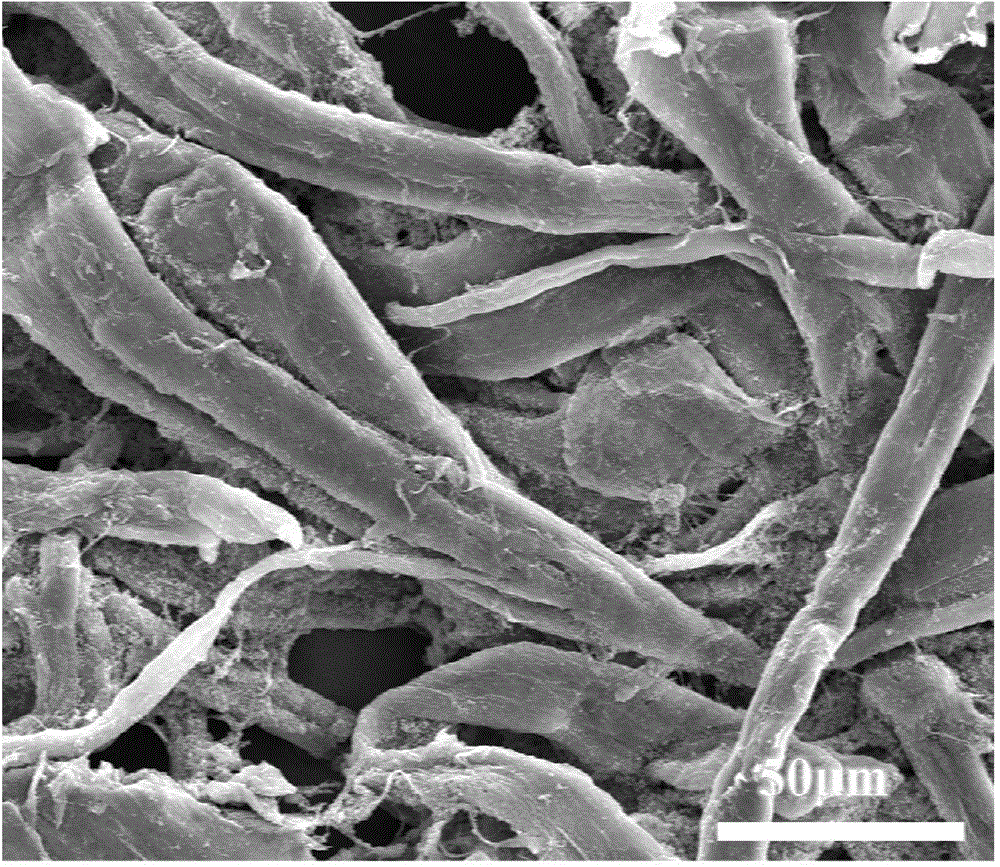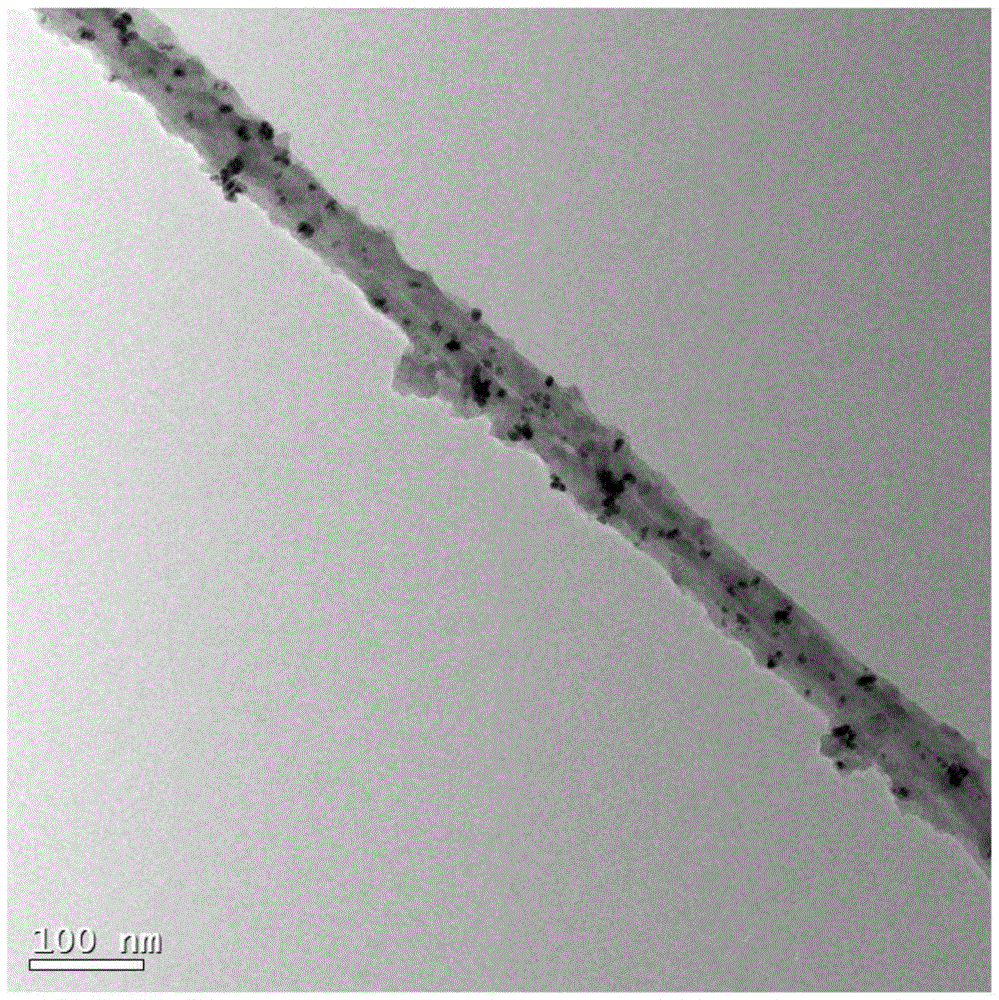Preparation method of polypyrrole/palladium-cellulose paper base catalyst for catalyzing ammonia borane dehydrogenation
A technology for catalyzing borane and polypyrrole, which can be used in organic compound/hydride/coordination complex catalysts, physical/chemical process catalysts, chemical instruments and methods, etc., and can solve the problems of poor stability and low catalytic efficiency.
- Summary
- Abstract
- Description
- Claims
- Application Information
AI Technical Summary
Problems solved by technology
Method used
Image
Examples
specific Embodiment approach 1
[0015] Specific embodiment one: the preparation method of the polypyrrole / palladium-cellulose paper-based catalyst that this embodiment catalyzes the dehydrogenation of borane ammonia is realized according to the following steps:
[0016] 1. Soak the cellulose paper in deionized water, then add pyrrole monomer, shake evenly to get the mixed solution;
[0017] 2. Add the sodium tetrachloropalladate aqueous solution with a concentration of 0.05~0.2mol / L to the mixed solution described in step 1, and shake it at room temperature for 18~24h to obtain the reaction solution containing polypyrrole / palladium-loaded composite paper ;
[0018] 3. Take out the polypyrrole / palladium-loaded composite paper from the reaction solution containing the polypyrrole / palladium-loaded composite paper described in step 2, then wash with deionized water and absolute ethanol for 2 to 3 times respectively, and dry it Finally, polypyrrole / palladium-cellulose paper-based catalyst is obtained.
[0019] ...
specific Embodiment approach 2
[0022] Embodiment 2: The difference between this embodiment and Embodiment 1 is that in Step 2, an aqueous solution of sodium tetrachloropalladate with a concentration of 0.1 mol / L is added to the mixed solution described in Step 1. Other steps and parameters are the same as those in Embodiment 1.
specific Embodiment approach 3
[0023] Specific embodiment three: the difference between this embodiment and specific embodiment one or two is that in step two, the volume ratio of pyrrole monomer to sodium tetrachloropalladate is 1:4~9, and the concentration is 0.05~0.2mol / L. Sodium chloropalladate aqueous solution is added in the mixed solution described in step one. Other steps and parameters are the same as those in Embodiment 1 or Embodiment 2.
PUM
| Property | Measurement | Unit |
|---|---|---|
| Particle size | aaaaa | aaaaa |
| Diameter | aaaaa | aaaaa |
Abstract
Description
Claims
Application Information
 Login to View More
Login to View More - R&D Engineer
- R&D Manager
- IP Professional
- Industry Leading Data Capabilities
- Powerful AI technology
- Patent DNA Extraction
Browse by: Latest US Patents, China's latest patents, Technical Efficacy Thesaurus, Application Domain, Technology Topic, Popular Technical Reports.
© 2024 PatSnap. All rights reserved.Legal|Privacy policy|Modern Slavery Act Transparency Statement|Sitemap|About US| Contact US: help@patsnap.com










